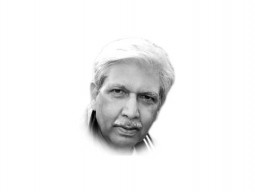
Relations between the government in power and the higher judiciary have had a stormy history. In fact, Pakistan grappled with one of its worst crises on November 28, 1997 when an unruly mob stormed into the Supreme Court, forcing the then chief justice, Sajjad Ali Shah, to adjourn the contempt of court case against then prime minister Nawaz Sharif. This writer was in England when the other episode, the constitutional crisis, took place. But he got the details from one of the English newspapers. In 1954, the governor-general Ghulam Mohammed Khan dismissed the Constituent Assembly. Maulvi Tamizuddin Khan, the speaker of the assembly, challenged the dismissal in court and the case was filed in the morning of November 7, 1954. There is a wonderful story about how the establishment tried to ensure that the speaker wouldn’t make it to the high court and how he finally managed to do so by hopping into a rickshaw, dressed in a burqa. Although Justice AR Cornelius agreed with the plaintiff and overturned the dismissal, the Federal Court, under Mr Justice Muhammad Munir, upheld the sacking.
Justice AR Cornelius was the sole dissenting judge in the landmark judgment which forever altered the course of politics in Pakistan and sealed the fate of democracy. He had interpreted the law conscientiously and without fear. The guidelines were there and all he had to do was follow them.
The decision to uphold the dismissal of the constituent assembly marked the beginning of the overt role of the military and the civil establishment in the politics of this country. All one had to do was add the barons of the industrial class and the sagging rump of the rural squirearchy, and one had defined the power base in the country.
Published in The Express Tribune, March 20th, 2011.













1732012115-0/Untitled-design-(14)1732012115-0-270x192.webp)





COMMENTS (7)
Comments are moderated and generally will be posted if they are on-topic and not abusive.
For more information, please see our Comments FAQ